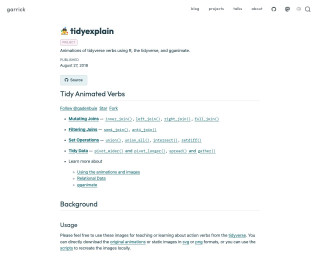Resources
This carefully curated collection of resources will help you find packages and learning resources to help you on your R journey.
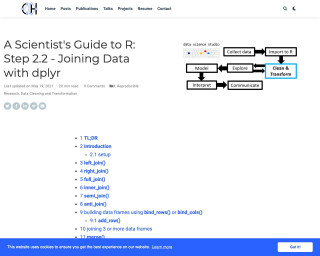
A Scientist's Guide to R: Step 2.2 - Joining Data with dplyr
This post is part of the Scientist's Guide to R series and focuses on using joins to combine data frames in R with the dplyr package. It covers different types of joins, such as inner, left, right, full, semi, and anti join, as well as using bind_rows() or bind_cols() to build data frames. The post also mentions the merge() function in base R for joining data frames.
Go to Resource

Applied Data Skills
The 'Applied Data Skills' book by Emily Nordmann and Lisa DeBruine is designed to teach the fundamentals of data processing and presentation using R. It guides learners through data import, cleaning, summarization, visualization, and report generation, aiming to provide skills for professional reporting and presenting. The book is part of a 10-week course with each chapter introducing new concepts and practical exercises. It emphasizes learning through practice, error resolution, and the efficient use of help resources rather than memorization. The goal is to enable learners to create automated, updateable reports and visualizations with R.
Go to Resource
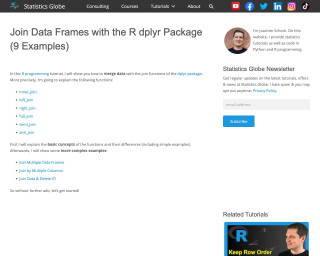
Join Data with dplyr in R (9 Examples) | inner, left, righ, full, semi & anti
This tutorial provides examples and explanations of how to join and merge data frames in R using the dplyr package. It covers inner_join, left_join, right_join, full_join, semi_join, and anti_join functions.
Go to Resource
Let's talk about joins
This blog post by Crystal Lewis delves into data joins, a fundamental process in data analysis when dealing with multiple datasets. The author clarifies horizontal and vertical joining methods, providing examples and explaining the nuances of left, right, full, and inner joins. Lewis emphasizes considering the type of join for specific research purposes and offers guidance on performing these operations, particularly in R, though the concepts apply across various programming languages. Importantly, the post outlines rules regarding variable naming and keys which are crucial for successful data merging.
Go to Resource
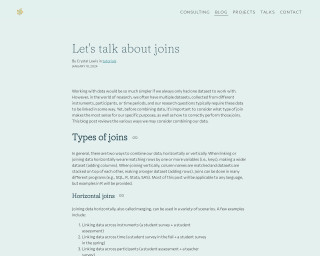
Let's talk about joins
This content provides a tutorial by Crystal Lewis on how to perform joins in data analysis, both horizontal and vertical, using SQL, R, Stata, SAS, or other programs. It explains different types of joins such as left, right, full, and inner joins, and the scenarios in which they might be used, like linking data across instruments, time, or participants. Lewis further details two important rules for horizontal joins related to variable naming and keys, ensuring the proper merging of datasets without duplication or data loss.
Go to Resource
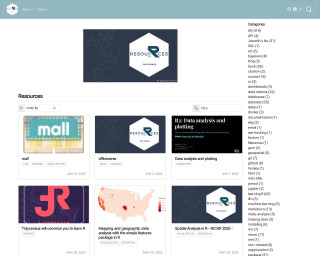
resouRces
This content encompasses a comprehensive list of R-related educational materials, packages, tutorials, and datasets with projected dates ranging up to the year 2025. It includes various titles that focus on learning R programming, data analysis, data visualization, geospatial mapping, and statistical methods. Significant emphasis is placed on resources for learning R, such as introductions to R, books, courses, and video tutorials. Additionally, specific packages for data wrangling, statistical modeling, and visualization are mentioned, indicating the evolution and specialization of R's ecosystem to cater to diverse data science needs.
Go to Resource
